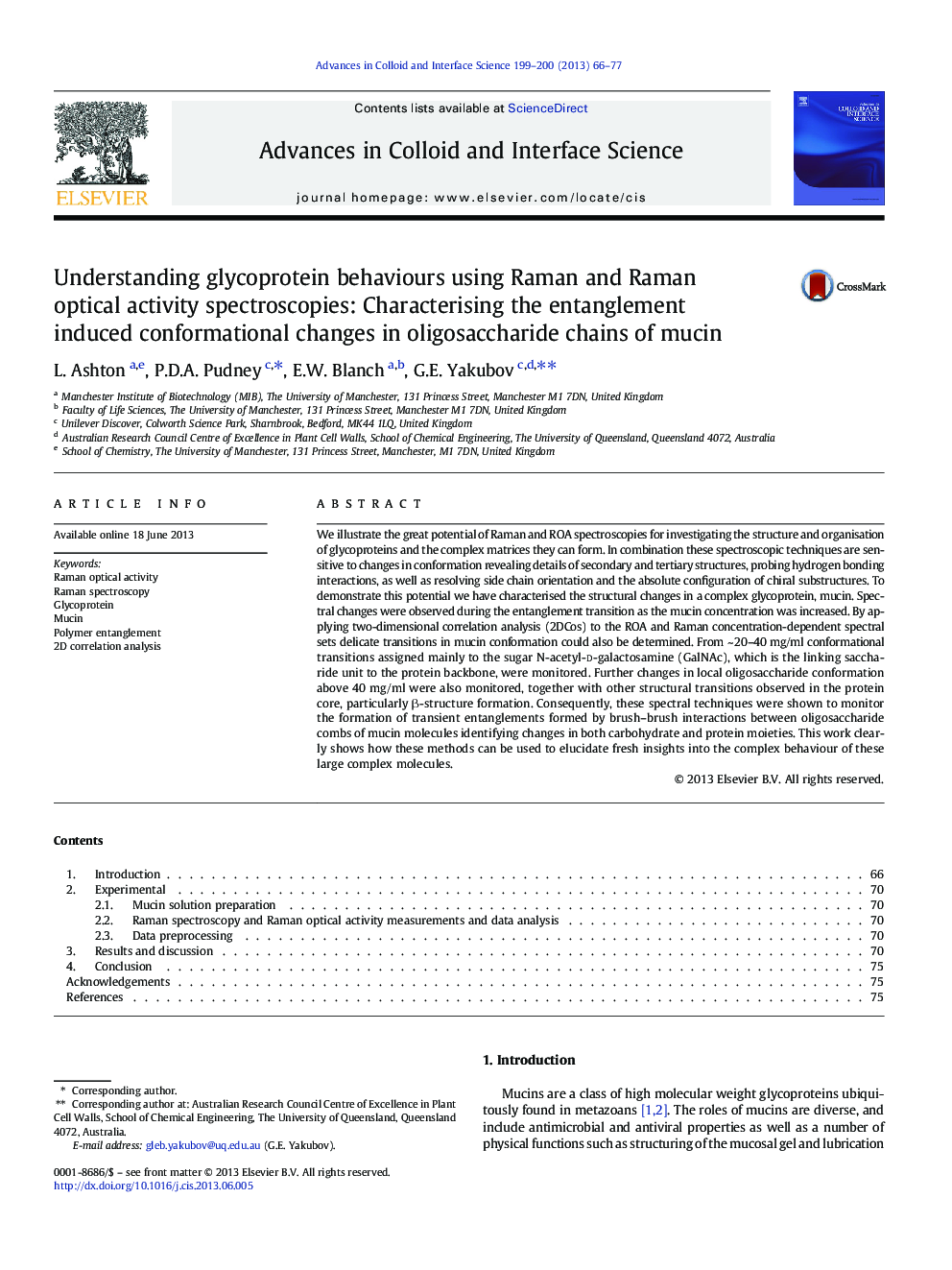| Article ID | Journal | Published Year | Pages | File Type |
|---|---|---|---|---|
| 590781 | Advances in Colloid and Interface Science | 2013 | 12 Pages |
•Raman Optical Activity and Raman Spectroscopy are used to characterise a complex, extensively post-translationally modified glycoprotein.•Structural changes associated with the entanglement transition in aqueous solutions of mucin are ascertained.•The entanglement is found to affect the conformation of N-acetylgalactosamine-serine/threonine link.•At concentration above 30 mg/ml mucin exhibits some degree of structuring similar to beta-sheet or beta-strand.•Chemometric 2D correlation analysis provides a useful tool for analysing multidimensional spectra of complex glycoprotein.
We illustrate the great potential of Raman and ROA spectroscopies for investigating the structure and organisation of glycoproteins and the complex matrices they can form. In combination these spectroscopic techniques are sensitive to changes in conformation revealing details of secondary and tertiary structures, probing hydrogen bonding interactions, as well as resolving side chain orientation and the absolute configuration of chiral substructures. To demonstrate this potential we have characterised the structural changes in a complex glycoprotein, mucin. Spectral changes were observed during the entanglement transition as the mucin concentration was increased. By applying two-dimensional correlation analysis (2DCos) to the ROA and Raman concentration-dependent spectral sets delicate transitions in mucin conformation could also be determined. From ~ 20–40 mg/ml conformational transitions assigned mainly to the sugar N-acetyl-d-galactosamine (GalNAc), which is the linking saccharide unit to the protein backbone, were monitored. Further changes in local oligosaccharide conformation above 40 mg/ml were also monitored, together with other structural transitions observed in the protein core, particularly β-structure formation. Consequently, these spectral techniques were shown to monitor the formation of transient entanglements formed by brush–brush interactions between oligosaccharide combs of mucin molecules identifying changes in both carbohydrate and protein moieties. This work clearly shows how these methods can be used to elucidate fresh insights into the complex behaviour of these large complex molecules.
Graphical abstractFigure optionsDownload full-size imageDownload as PowerPoint slide
